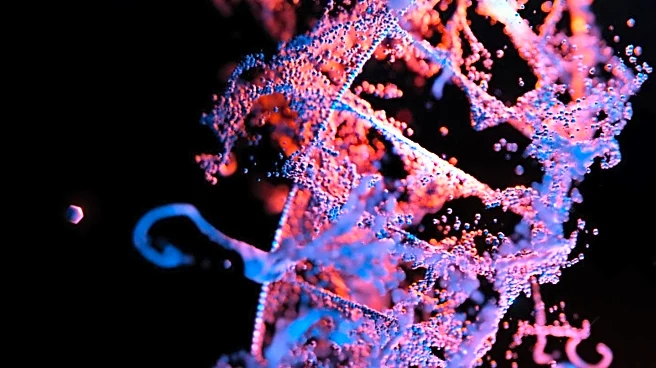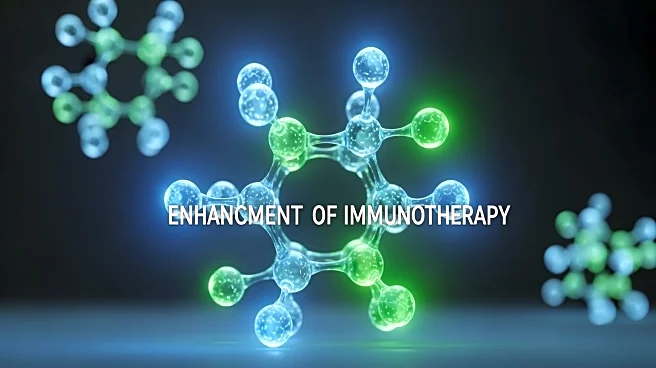What's Happening?
A recent study has identified a significant immunosuppressive microenvironment within lymph node metastases, driven by a specific macrophage subpopulation producing IL-10. This subpopulation, characterized
by high levels of Galectin-9, activates the BTK/STAT3 pathway, leading to increased IL-10 secretion and creating an immune-tolerant niche. The study utilized pan-cancer single-cell transcriptomic analysis across 11 cancer types, involving 859,744 cells from 132 samples. The findings suggest that lymph node metastases are more immunosuppressive compared to primary tumors, highlighting the role of Galectin-9 in immune escape mechanisms.
Why It's Important?
The discovery of the Galectin-9/BTK/STAT3 axis in lymph node metastases offers a potential therapeutic target for cancer treatment. By understanding the mechanisms of immune suppression in metastatic environments, new strategies can be developed to enhance immune response against cancer. This could lead to improved outcomes for patients with metastatic cancer, as targeting these pathways may reduce metastatic burden and improve the efficacy of existing treatments such as PD-1 blockade.
What's Next?
Future research may focus on developing therapies that inhibit the Galectin-9/BTK/STAT3 pathway, potentially in combination with existing immunotherapies. Clinical trials could be designed to test the efficacy of such treatments in reducing lymph node metastases and improving patient prognosis. Additionally, further studies may explore the role of Galectin-9 in other types of cancer and its potential as a universal target for cancer therapy.
Beyond the Headlines
The study highlights the complex interplay between cancer cells and the immune system, emphasizing the need for personalized approaches in cancer treatment. Understanding the molecular drivers of immune suppression in metastatic environments could lead to more effective and targeted therapies, reducing the impact of cancer on patients' lives.











